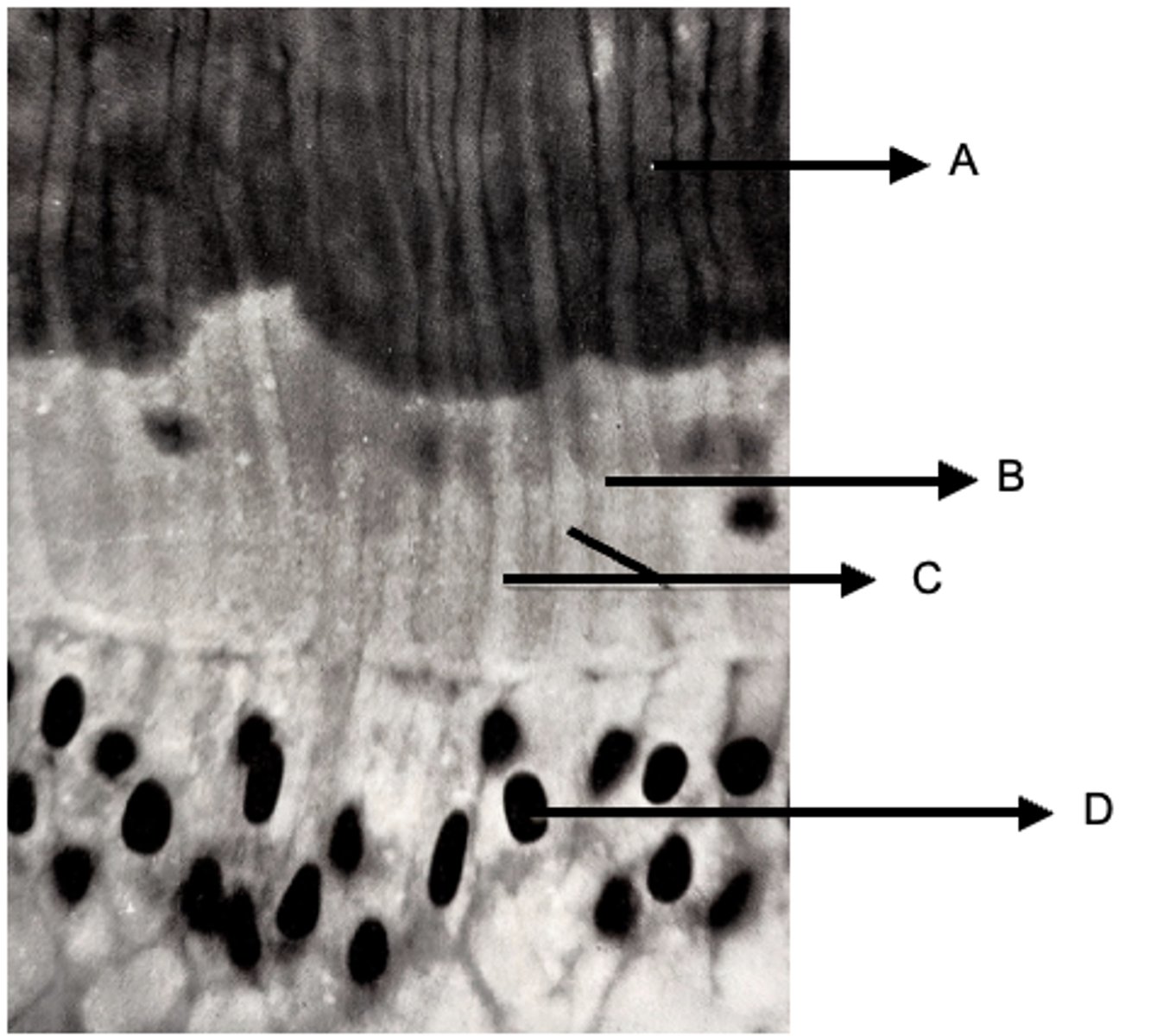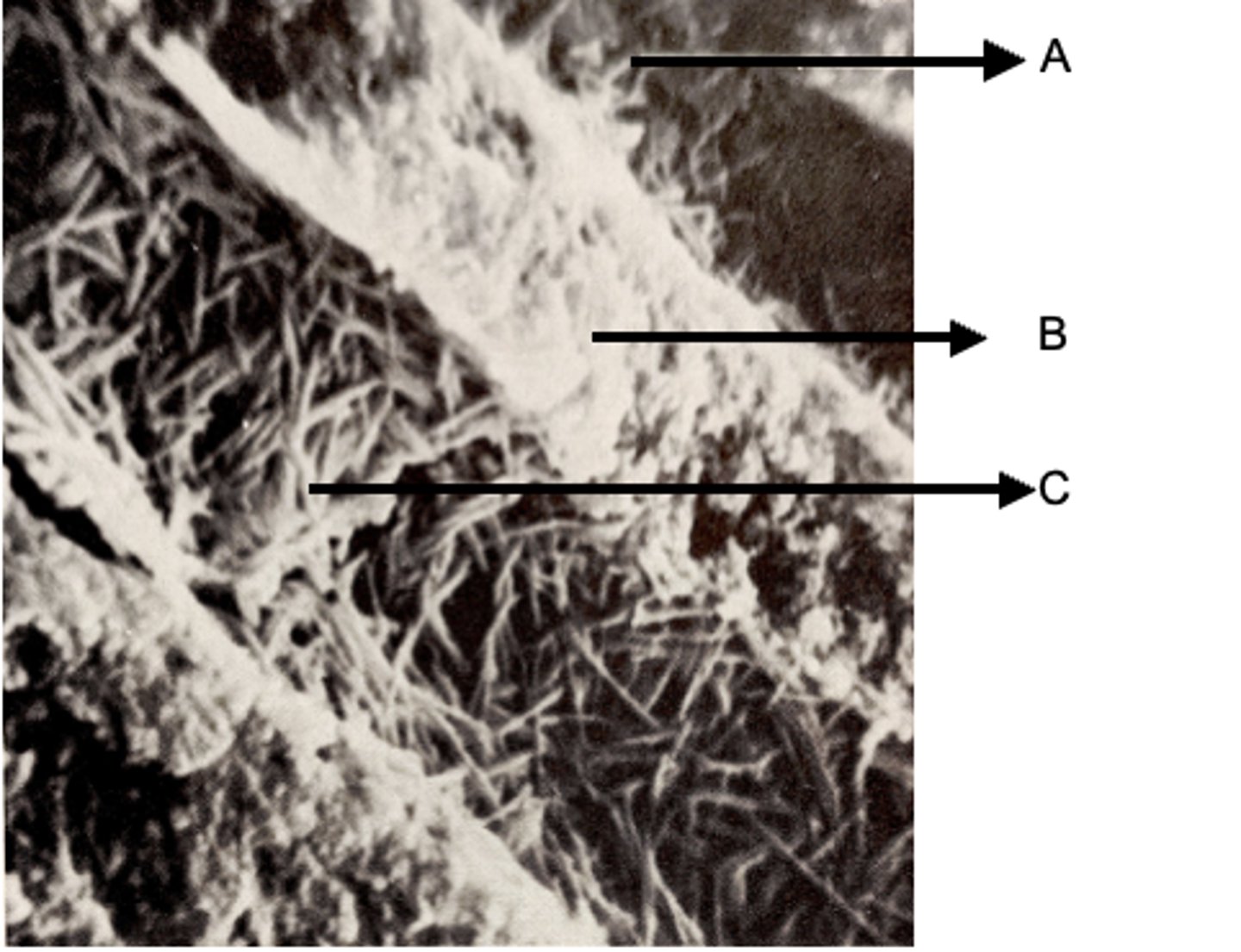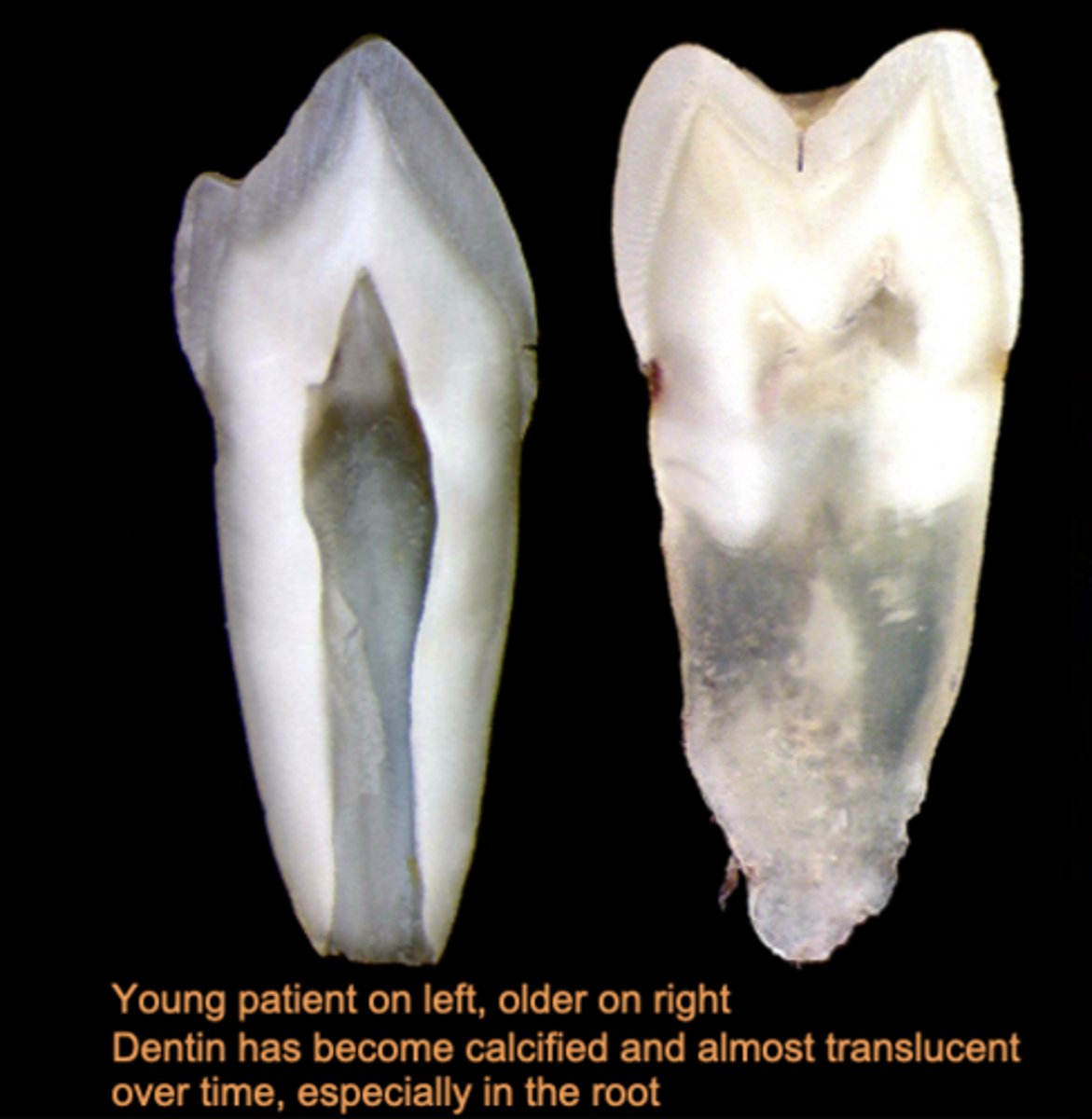Histology of Dentin
1/32
There's no tags or description
Looks like no tags are added yet.
Name | Mastery | Learn | Test | Matching | Spaced |
|---|
No study sessions yet.
33 Terms
Importance of dentin
Management of dental caries, bonding of dental restorations, management of tooth sensitivity, selection of lining materials
Compare the compression strength between dentin and enamel
Similar
Compare the flexibility/hardness of dentin and enamel
Dentin is more flexible (viscoeleastic), while enamel is brittle, harder, and more mineralized
What property of dentin lends itself to its high flexibility, relative to enamel
Collagen components
What does elastic modulus tell us about dentin/enamel?
Measures a material's stiffness by quantifying its resistance to elastic deformation under applied stress (higher in enamel)
What is the significance of demineralized values for dentin/enamel physical measurements?
Underlines the importance of mineralization in the hardness of dentin
Dentin locations
Crown and tooth root, molecularly bound to tooth enamel
Describe dentin structure
Tubular, microcanals radiate from dental pulp to enamel
Dentin is considered a viscoelastic tissue due to its high degree of flexibility, why is it so vital?
Connection between dentin/pulp-dentin/pulp complex; reactivity to agonists against either party
What are odontoblast processes?
Organelle-containing structures that traverse the body of the dentin. Can branch laterally
Do odontoblast processes extend into enamel or pulp?
Yes, they can extend into enamel and/or pulp.
What can the extension of odontoblast processes into pulp lead to?
It can lend to hypersensitivity.
Describe the structure of dentin
Calcified network of collagenous fibrils and non-collagenous proteins with concentric tubules which radiate outward from the pulp to the enamel (radial arrangement of tubules); occupied by odontoblast processes
Peritubular dentin
Hypercalcified region with a small amount of organic content (proteoglycans and glycosaminoglycans); contains dentin tubules
Intertubular dentin
Exposing this region is essential for creating strong bonding during restorations
Main structural component of the dentin, collagen fibrils with smaller amounts of apatite crystals arranged roughly parallel to the fibrils
Dentin tubules trends (superficial vs. deep dentin)
Tubules increase in diameter and quantity as they get closer to the pulp (deep dentin); superficial dentin has better bonding, more intertubular dentin
What is a contributing factor to a higher ratio of intertubular dentin in superficial dentin?
Not all tubules reach all the way to the superficial layer
Dentin composition by weight
Inorganic: 70%
Organic: 20%
Water: 10%
Dentin composition by volume
Inorganic: 40-45%
Organic: 30%
Water: 20-25%
Inorganic components of dentin
Hydroxyapatite; small amounts of sodium, magnesium, chloride, carbonate, fluoride
Organic components of dentin
Type 1 collagen, aa (Hydroxyproline, glycine, alanine, proline), non-collagenous components (Lipids, phospholipids, phosphoproteins, mucopolysaccharides, enzymes-proteases)
Label this image
A: Calcified dentin
B: Uncalcified dentin (predentin)
C: Odontoblastic processes
D: Bodies of odontoblasts

Label this image
A: Dentinal tubule
B: Intertubular dentin
C: Dentinal tubule

Primary dentin
Odontoblast are critical for the formation of primary dentin until the tooth becomes functional
Secondary dentin
When contacts between antagonistic cusps are established, formation of secondary dentin starts immediately and continues throughout life
What are some causes of dentin remodeling?
Occlusal trauma, tooth wear, dental caries, cavity preparations, restorative procedures, materials causing reaction in dentin, marginal microleakage
How does the dentin-pulp complex react to stimuli?
Tertiary dentin: Appears with alterations, depending on the speed and severity of the attack, the progression of the reaction and the age of the patient.
Reactionary dentinogenesis
Smaller lesion reaches dentin, low grade inflammation, dentin passes message to pulp; pulp starts process of inflammation and odontoblasts produce tertiary dentin as protection
Reparative dentinogenesis
More pronounced lesion and stimulus, has damaged odontoblasts, stem cell recruitment and differentiation into odontoblast-like cells which produce tertiary dentin
Reparative dentin
Does not result from the activity of odontoblasts or associated cells but specifically from pulp progenitors implicated in the formation of bone-like unorganized dentin.
Sclerotic dentin
Dentin that has become translucent due to calcification of the dentinal tubules. As a result of injury or normal aging. Also called transparent dentin.

Hybrid layer of dentin
Intermediate layer consisting of hydrophilic resin monomers infiltrated in demineralized dentin surfaces
Hydrodynamic component of dentin hypersensitivity
Heat/cold/air/mechanical pressure affects fluid movement; mechanical disturbance of odontoblast processes, potentially reaching pulp tissue